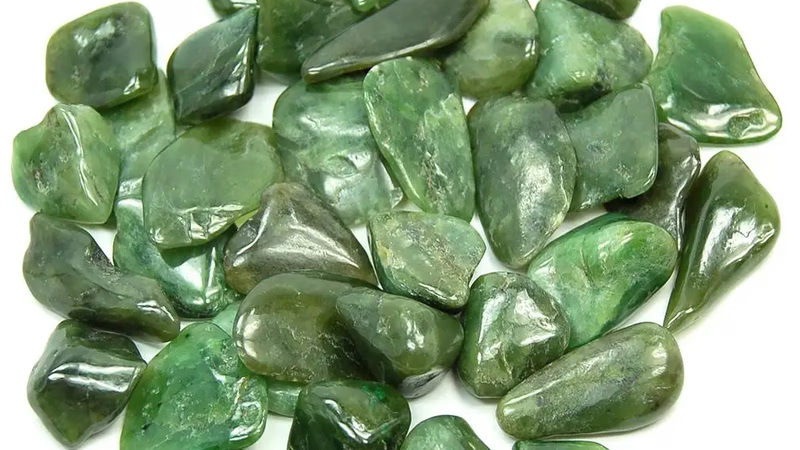
Jade stone detection methods: visual examination and advanced techniques.
A visual examination of the stone can provide initial clues about its authenticity and quality. Experts look for characteristics such as color, transparency, texture, and luster. They compare the stone to known samples and assess its overall appearance. Jadeite and nephrite have different densities and hardness levels, which can be measured to identify the type of jade. Density is typically measured using the Archimedes' principle, which involves weighing the stone in air and then in water to determine its specific gravity. Hardness can be assessed using the Mohs scale, where jadeite has a hardness of around 6.5-7 and nephrite has a hardness of around 6-6.5.
It is very difficult to distinguish the original jade stone from the counterfeit with the naked eye, but with special tools, it is possible to distinguish the bad and painted types, which, unfortunately, are very numerous. In the classification system of this gem, "Imperial" is known as "A". "B" is a stone that is boiled in a strong acid to remove impurities to clean its grooves from any contamination and finally covered with wax or synthetic resin. "C" has very little quality and is completely painted.
Clear specimens are often sold as green jade after dyeing. In confirmation of this, it is good to quote Roland Ohl: "Only in consultation with a specialist jeweler or a good and professional intermediary can you avoid the risk of buying a counterfeit type" In addition, like the rest Gemstones, the identity of a gem is able to create credibility for the gemstone, and this is very important because only the main type has the properties of jade.
Green jade bears a resemblance to emeralds in appearance and color, and can sometimes be misdiagnosed. First of all, note that emerald is only green. Jade is found in different colors such as black, green, yellow, brown and another important difference is in the value of these two gems. The price of emerald in the market is much higher than the price of green jade and emerald is often seen in small dimensions (except Indian emerald) while jade stone is sometimes available in very large dimensions up to the size of a palm. Most emeralds have tiny inner veins that are visible to the naked eye. Emerald has a special clarity and luster that is intensified with a special oil for this feature. Often emerald is clear and jade is opaque. (Of course, the transparency of emerald varies from high to opaque)
Until 1863, mineralogists considered the material known as jade to be a single mineral. In that year, the French mineralogist Alexis Damour discovered that what had been called jade were actually stones of two distinct mineral species: jadeite and nephrite. However, the Chinese had already distinguished two types of jade more than a century earlier. Yu was the jade material they had traditionally carved (nephrite). Fei-ts’ui was the intense green jade material that began to enter China from Burma (Myanmar) in the mid-18th century (jadeite).
Although jadeite and nephrite have similar outward appearances, they have different internal structures and properties. Gemologists should distinguish between these materials. Nevertheless, most people commonly refer to both minerals as jade without further distinction.
Refractive index is a measure of how light bends as it passes through a material. Jadeite and nephrite have different refractive indices, which can be determined using a refractometer. By measuring the refractive index of a stone, it is possible to differentiate between jadeite and nephrite. Spectroscopy techniques, such as infrared spectroscopy (FTIR), can be used to analyze the molecular structure of a jade stone. These techniques can help identify the presence of specific minerals or impurities that are characteristic of jadeite or nephrite. X-ray diffraction is a method that provides information about the crystal structure of a material. It can be used to identify the mineral composition of a jade stone and confirm if it is jadeite or nephrite. XRD can also help detect any synthetic or treated jade.
Jadeite often exhibits a distinct fluorescent response under ultraviolet (UV) light. By subjecting a jade stone to UV light, experts can observe its fluorescence patterns and compare them to known jadeite samples. This method can help differentiate between jadeite and other materials. Recognizing and identifying jade stones accurately often requires the expertise and experience of qualified gemologists and jade specialists. They have in-depth knowledge of jade characteristics, regional variations, and can rely on their trained eye to assess the stone's authenticity and quality.
Due to the high price of each gram of green jade (in special samples) or other types of this stone, it is necessary to know the methods of distinguishing genuine jade from counterfeit so as not to get into trouble. Just as jade brokers are unaware of the quality of the underlying layers when buying cut and unprocessed stones, they may be mistaken and may sell counterfeit specimens to enthusiasts at a price equivalent to the original green jade.
-
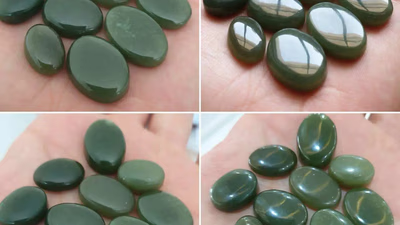
Myanmar"s Hpakant region is renowned for its high-quality jadeite, often called "Burmese jade. " This area has been a significant source of jade for centuries. Guatemala"s Motagua River Valley produces vibrant green jadeite, valued in the international market. China, with its rich jade culture, is known for nephrite jade from regions like Xinjiang and Hetian. Canada has emerged as a notable producer of nephrite jade, particularly in British Columbia. New Zealand"s South Island is famous for pounamu, which holds cultural significance for the Māori people. Australia and Kazakhstan also have significant jade deposits, with Australian jade known for its deep green color. The United States has nephrite deposits in Alaska and California, with notable locations like Big Sur.
Globally, much of the world"s jade is found around the Pacific Ocean rim due to geological processes. Countries like Russia and Central American nations also contribute to the global jade market, producing unique varieties prized for their colors and craftsmanship.
-
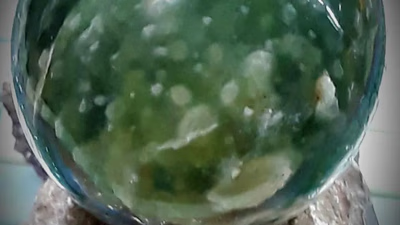
Jade is revered for its believed properties that promote balance, harmony, and well-being. It is thought to align the mind, body, and spirit, fostering a peaceful existence. The stone is associated with wisdom and clarity, enhancing mental faculties and decision-making abilities. Jade"s energy is said to support rational thinking and problem-solving while removing negative forces from environments. Green and purple jade are linked to the heart chakra, promoting emotional stability and deepening breathing. Additionally, jade is believed to strengthen memory and interpret dreams when placed under a pillow. Many consider jade a protective stone that shields against negative energies while attracting success and prosperity. Its calming influence helps alleviate anxiety and stress, encouraging emotional balance.
Furthermore, jade is thought to purify the body, supporting physical health and vitality by aiding the immune system. It also plays a role in spiritual growth by enhancing intuition and facilitating spiritual awakening. While these properties are rooted in traditional beliefs, many individuals find personal significance in incorporating jade into their lives. "
-
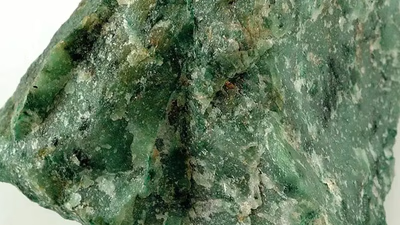
Jade is a durable gemstone but can be damaged by harsh chemicals, prolonged water exposure, and rough surfaces. To maintain its quality, avoid using household cleaners and remove jade jewelry during activities that may cause damage. For cleaning, use a soft cloth or brush with warm water and mild soap. Store jade in a soft pouch to prevent scratches and avoid extreme temperatures to prevent cracks. Jade consists of nephrite and jadeite, with nephrite being less valuable due to its lower hardness. Professional cleaning is recommended for intricate pieces or significant dirt buildup.
-
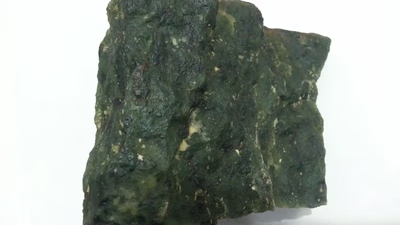
The price of green jade varies significantly based on factors such as color, transparency, purity, weight, and extraction location. Prices can range from $1 to $1 million depending on these attributes. The most valuable jade is sourced from Myanmar, with annual trading occurring in major centers like Rangoon and Hong Kong. In these markets, jade is sold in various forms including carved jewelry and antiques. The quality of jade is crucial; uncut or unprocessed pieces pose risks as they may be misrepresented. For instance, Myanmar green jade can cost between $5 to $2,500 per gram, while Khorasani jade from Iran is priced below $1 per gram. Black jade generally has a lower price point than green jade, with values around $2-3 per gram. Antique jade pricing is complex and requires expert evaluation due to factors like age and historical significance. Raw jade stones are often sold by weight; in Iran, prices for raw jade can be under $50 per kilogram but vary widely based on quality.
-

Visual examination is the first step in jade stone detection, focusing on characteristics like color, transparency, and texture. Experts compare stones to known samples and assess their overall appearance. Density and hardness measurements help distinguish between jadeite and nephrite, with jadeite being harder. The classification system categorizes jade into types A (Imperial), B (treated), and C (low quality). Misidentification can occur as jade resembles emeralds but differs in color variety and market value. Jade"s historical classification evolved from a single mineral to two distinct types recognized by mineralogists. Advanced techniques such as refractive index measurement, spectroscopy, and X-ray diffraction are essential for accurate identification. These methods help detect synthetic or treated stones, while UV light can reveal fluorescence patterns unique to jadeite.
Expertise from gemologists is crucial for authenticating jade due to the high market value of genuine specimens. Understanding these detection methods is vital for buyers to avoid counterfeit stones. "
-
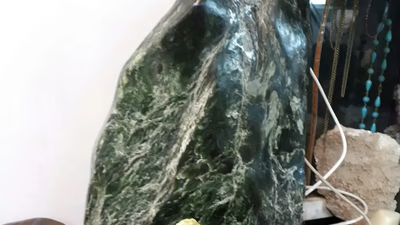
Jade quality is primarily determined by color, transparency, texture, and luster. Jadeite and nephrite exhibit a variety of colors, with vibrant hues being more desirable. Jadeite"s value increases with its transparency; high-quality jadeite is translucent, while nephrite is typically opaque. Jade is categorized into several grades: Category A represents high-quality jade with excellent color and transparency; Category B involves surface treatments that enhance appearance but compromise purity; Category C includes industrially dyed stones; Category B-C combines both methods; and Category D features a composite structure with plastic. Texture plays a crucial role in valuation, with smooth surfaces free from blemishes being preferred. Luster varies from matte to glassy, with bright reflections indicating higher quality. The craftsmanship involved in carving also significantly impacts jade"s value, as intricate designs and expert techniques enhance desirability.
-
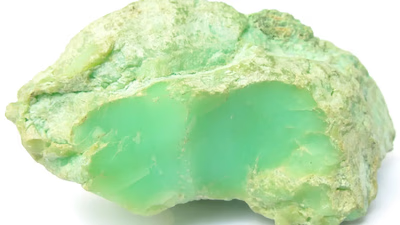
Jade is a gemstone with deep cultural significance, particularly in East Asia, where it symbolizes status, spirituality, and protection. In Chinese culture, jade is associated with virtues like wisdom and purity, believed to ward off evil spirits and provide spiritual protection. Various colors of jade exist, with the most valuable being the emerald green variety from Myanmar. Historically, jade carvings date back to 5,000 BC in China and have been used for good luck and healing properties. The value of jade is determined by its color, transparency, and texture; darker shades command higher prices. However, buyers must be cautious of counterfeit stones that are difficult to distinguish from genuine ones. The classification system includes "Imperial Jade" (Jade A), treated stones (Jade B), and low-quality dyed stones (Jade C). Consulting a reputable jeweler is essential to avoid purchasing fakes.
Jade"s connection to spiritual growth and enlightenment enhances its appeal as a bridge between physical and spiritual realms. Its beauty and rarity have captivated enthusiasts for centuries. "







